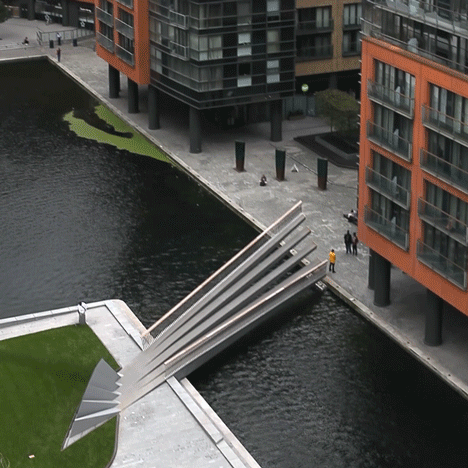
London's latest canal bridge rises and falls like the opening and closing of a fan
British firm Knight Architects and structural engineers AKT II have completed a moving footbridge in Paddington, London, that opens and closes like the blades of a traditional hand-held fan.
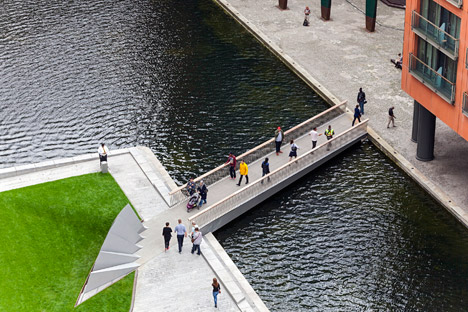
Consisting of five steel beams that rise and fall using hydraulic jacks, Merchant Square footbridge by Knight Architects and AKT II spans a 20-metre width of the Grand Union Canal in Paddington Basin, close to Thomas Heatherwick's Rolling Bridge that curls into a ball.
The architects, who specialise in bridge design, won a limited competition to design the crossing in 2012 with their plans for a "kinetic sculpture" that could rise to allow canal boats to pass along the waterway.
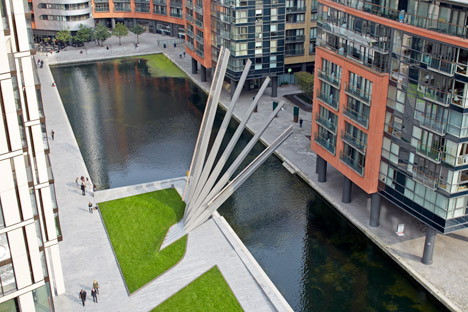
Opening in sequence, the bridge's five beams rise to different angles to create a fan-like effect. The first rises to 70 degrees, while the last lifts high enough to create a clearance space of two and a half metres over the surface of the canal. The weight of the beams – which range from six to seven tons – is balanced by a 40 ton counterweight that keeps the beams steady as they rise and fall.
When fully closed, the bridge is safe for pedestrians and offers a three metre wide crossing.
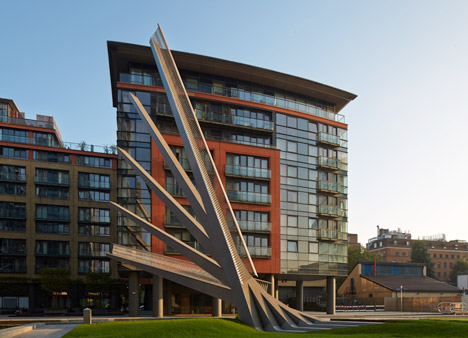
"Shaped counterweights assist the hydraulic mechanism and reduce the energy required to move the structure," explained the architects and engineers in a statement.
"The bridge balustrades are formed from twin rows of inclined stainless steel rods, overlapping to form a robust yet filigree and highly transparent structure."
The handrail formed by these balustrades features a built-in strip of LED lighting to illuminate the crossing at night. Like Heatherwick's bridge, the structure opens every Friday to let boats sail past.
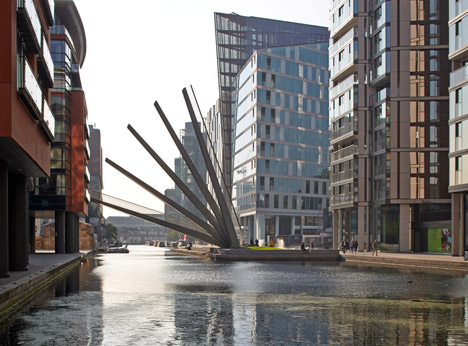
The bridge is part of a wider regeneration project for the site, with future plans including a garden square with an events space and water maze. A total of six new buildings will be constructed, with three already complete.
Photography is by Edmund Sumner.
Read our interview with project architect, Bartlomiej Halaczek:
Anna Winston: Can you briefly explain what the project is and how it came about?
Bartlomiej Halaczek: It is a short-span lifting footbridge designed to provide a shorter link between the Sunset Terrace and the new park at the Merchant Square site with the urban fabric south of Paddington. It was the result of a competition for a new pedestrian connection replacing the irreparably broken "corkscrew" bridge that was crossing the canal at the same site. The focus, both of the clients as well as the designers, was to design a beautiful and memorable structure that is modest in its appearance most of the time, but when raised, it generates the "wow" moment.
Anna Winston: How did you develop the idea of these five separate blades that lift almost independently?
Bartlomiej Halaczek: The design has been influenced by many different factors. Most important, of course, was the structural concept, and the choice for a lifting bridge. A fixed structure wasn't viable at that site as the constraints wouldn’t allow for the ramps necessary to get above the shipping envelope. A moving structure however would have to be maintained, and as these are usually quite significant costs, we had to keep them low by not overcomplicating the structure and picking a relatively simple mechanical system.
A bascule solution operated with hydraulic rams was not only quiet, reliable and low-maintenance, it also offered the desired visual drama, when an understated horizontal every-day object suddenly stands up pointing at the sky. Subdividing the structure into five independent objects made it unique without greatly increasing the cost, as there was effectively only one-fifth of the tonnage to be moved by each hydraulic cylinder.
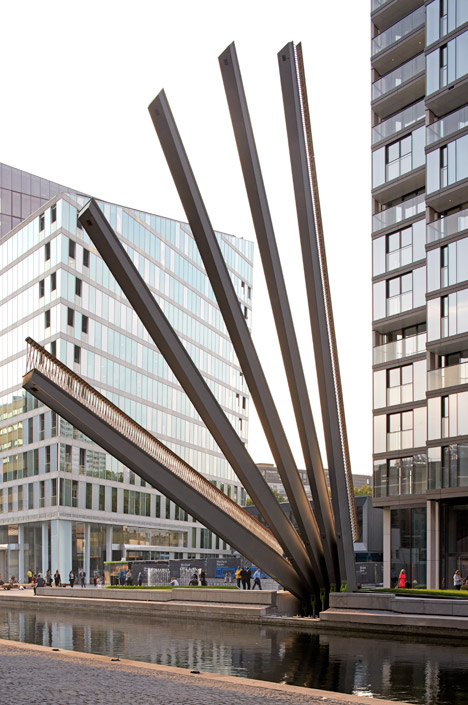
As structural elements, although visually sculptural, the counterweight fins provide balance to the deck beams which helps reducing the size of the hydraulic rams. The appearance of the bridge follows the general concept to create references to the industrial history of Paddington Basin, a theme that has been carefully applied by the site developer European Land. Last but not least, the bridge becomes a further addition to the collection of beautiful and spectacular bridges along Paddington Basin.
Anna Winston: Can you tell me a bit about how the bridge was built?
Bartlomiej Halaczek: The main bridge structure is made completely out of steel, each finger fabricated and painted in North Yorkshire and then shipped to London. On site, the counterweight fins were filled with concrete and sealed with steel plates from above. The total weight of each counterweight can be read on the tips of the fins. The parapet is made of brushed stainless steel tubes with a durable handrail made of Iroko wood.
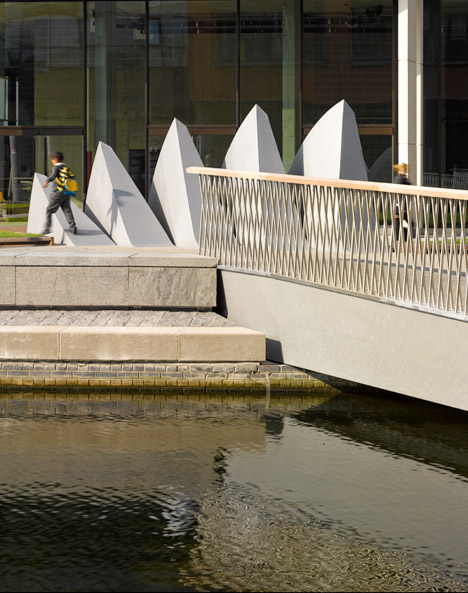
The most challenging part of the fabrication was the required accuracy. For safety reasons, gaps between the beams had to be no bigger than 3mm over a length of 20 metres! As impressive was the fabrication accuracy of the conical counterweights, which sink into the engine room turning into a set of walkable steps flush with the granite slabs around them. The quality of the engineering is absolutely remarkable, and great credit goes to SH Structures in North Yorkshire who turned a lot of fun in Grasshopper and Rhino into a solid piece of engineering.